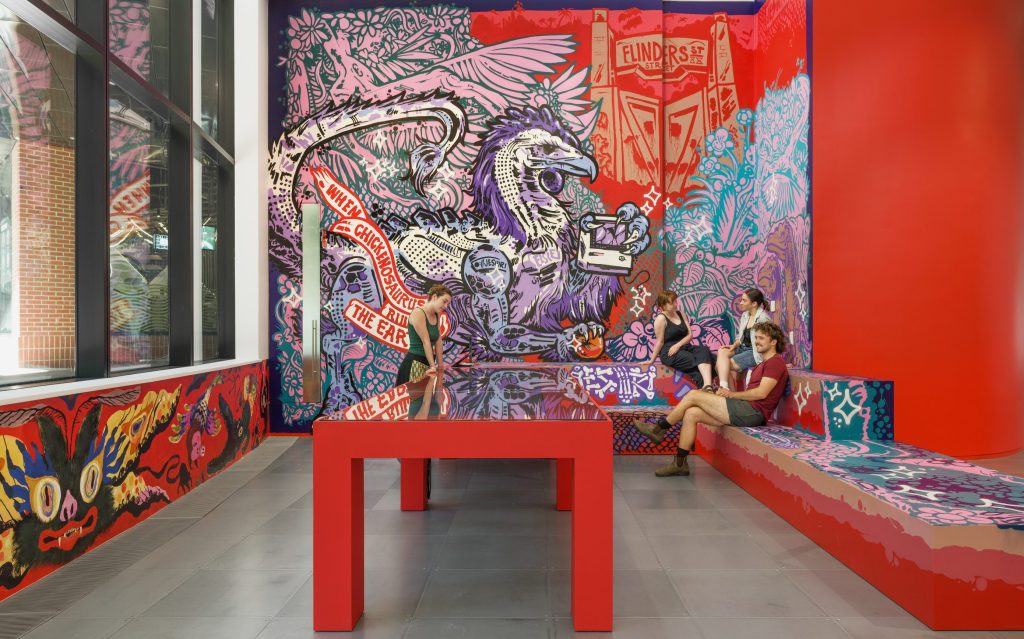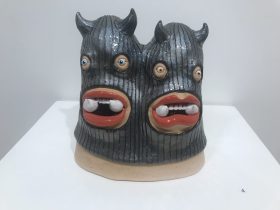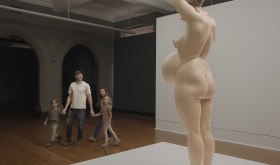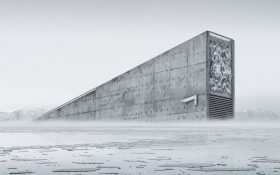Through urbanisation, humanity separated itself from nature. Through agriculture, humanity tamed elements of nature. And now, through modern scientific breakthroughs, humanity is destroying nature at unprecedented levels. The further humanity delves into the “unnatural”, the closer humanity is to pushing its “self-destruct” button through technological achievements in synthetic biology, information technology and more – the Anthropocene awaits us.
Considering the role that scientific development plays in this potential disaster for humanity, Science Gallery Melbourne provides the perfect platform for NOT NATURAL, an artistic exploration of a world where the boundary between the natural and unnatural is being tested.
NOT NATURAL centres aspects of the “artificial” with test tubes and robotic arms, but also features an artwork with a live jellyfish (Aguaviva by Thomas Marcusson). Rather than just conceptual or aesthetic choices, these components are fundamental to the artworks.
For such a big question, there is a clear and concise angle that the exhibition takes in exploring the relationship between the “natural” and “unnatural” through a series of specific, yet still interconnected investigations. Large concepts like macro-environmental degradation are explored alongside lawn surface technology in a way that somehow works.
Yet, there is a general aesthetic consistency through DIY methods of electrical engineering and software integration, allowing the myriad works to blend well together and provide the feeling of a laboratory in action. On the other hand, works that would fit better in a more “traditional” art space (that is, the white cube) feel out of place, such as Patricia Piccinini’s sculpture of a bestial, evolved form of humanity, Kindred.
As with all Science Gallery exhibitions, audience interaction is key in NOT NATURAL, and in many cases artworks seek to mimic, but also break down, the relationship between humanity and nature through participatory activities. Visitors can severely damage a digital ecosystem through touching Yandell Walton’s Human Effect, activate David Bowen’s machete-wielding houseplant by approaching it, and even design their very own hybrid creature to live in a digital landscape in the Chickenosaurus project by JESWRI, Andy Frazer, Gorkie and Freda Chiu.
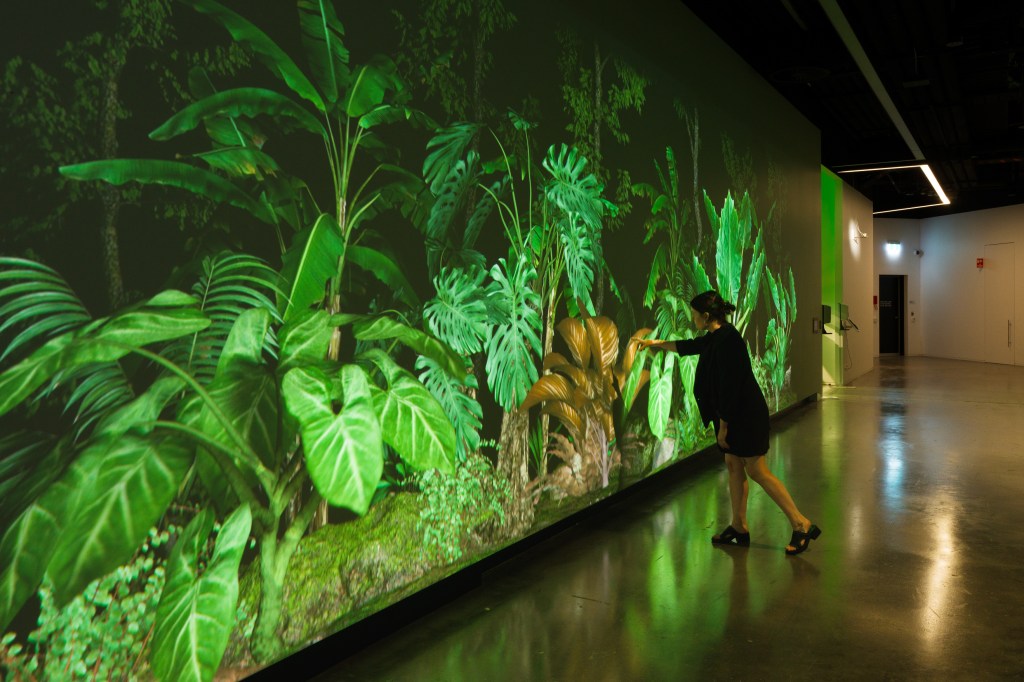
Instead of getting bogged down by artistic discourse, these interactive elements make NOT NATURAL an enjoyable, as well as educational experience. Children and adults alike will find joy through drawing their own chimeras in Chickenosaurus or pushing buttons to an orchestra of lights in Amélie Brindamour‘s In Oscillation. It’s a refreshing way to delve into deep discussions about our world today.
On that note, however, Marcusson’s Aguaviva – the standout inclusion of the exhibition for this writer – is one of the few that doesn’t demand human interaction, but relies on the ancient life-form itself. The jellyfish is placed in a LED-lit tank, where a camera tracks its movements and translates it into digits to explore the concept of “randomness”. It is a remarkable piece, one that may be slightly controversial, but Marcusson manages to use one of the simplest lifeforms to provide a compelling case of how billion-year-old organisms in the natural world could achieve something that our very best computers in the man-made world cannot.
Read: Exhibition review: Yucky, Adelaide Contemporary Experimental
Overall, NOT NATURAL presents a series of intriguing, if sometimes niche, perspectives on the public discourse surrounding the natural and human-made worlds, and a strange and sometimes scary future for humanity squashed between them. It also stands out as a unique experience within the Melbourne art scene, where a DIY-lab approach is embraced as the foundation of many of these artistic practices.
NOT NATURAL is on view at Science Gallery Melbourne until 29 June; free entry.
